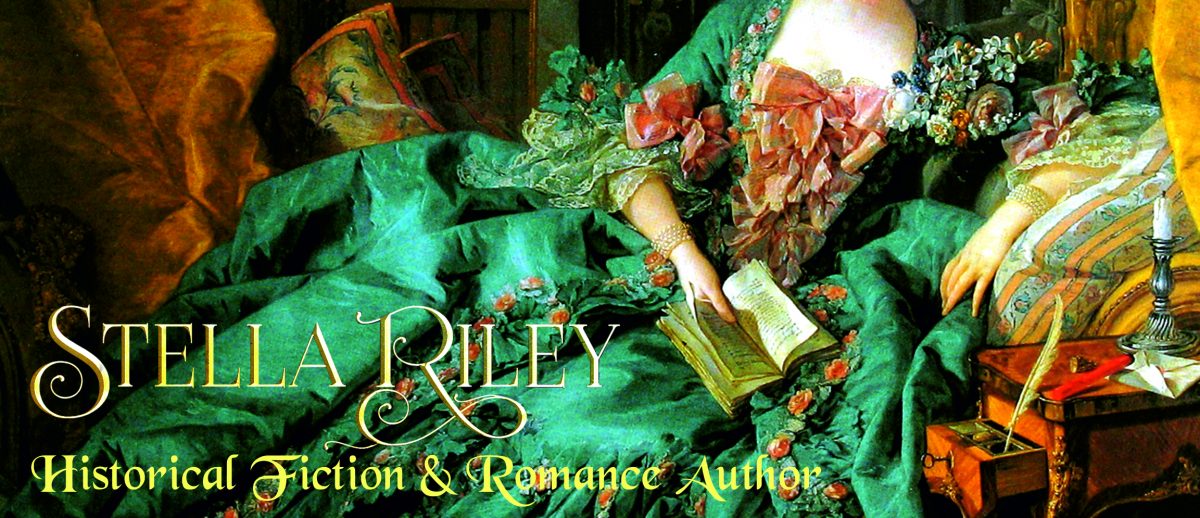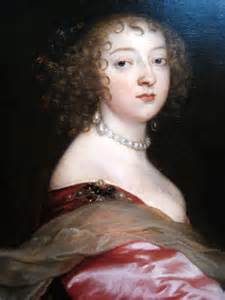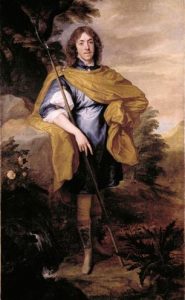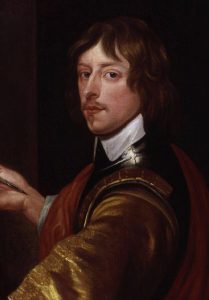James Graham 1612 to 1650
5th Earl and 1st Marquis of Montrose

Portrait by Gerrard von Honthurst
I should begin by saying that, since Montrose is one of my great heroes, I won’t be making any attempt to be unbiased here. This one is personal.
Born at Montrose and heir to one of the most ancient and noble Scottish families, James Graham might well be described as the perfect Renaissance gentleman. He was a soldier, a scholar, a poet and the epitome of Christian chivalry. He rode well and was extremely athletic; he enjoyed books and the arts and held deep religious convictions. He was also very good-looking – curling chestnut hair, clear grey eyes and a splendid figure.
When Archbishop Laud’s new prayer book was introduced in Scotland in 1637, Montrose – though a Royalist – was one of the first to sign the National Covenant. Originally, he didn’t see this as opposition to the Crown. He saw it as a matter of spiritual liberty and, initially, even fought in the Bishops’ Wars of 1639-40 until doubts set in, causing him to distance himself from the increasing despotism of the Kirk. This brought him into conflict with Archibald Campbell, Marquis of Argyll – with the result that Montrose, by now in direct contact with Charles 1, was imprisoned for five months without trial.
Montrose finally joined the King in Oxford in 1643 and, in March of the following year, rode north as His Majesty’s Lieutenant-General in Scotland. With only two companions but recruiting as he went, he winnowed his way through the Covenant-dominated lowlands to his home territory of Perthshire; and there, in July, his thousand or so Highlanders were joined by 1,600 Irishmen led by the somewhat colourful Alasdair Coll Keitach.
As Max Hastings puts it in his outstanding biography, The King’s Lieutenant-General had been granted the steel spearhead of an army. Montrose’s Year of Miracles had begun.
Inevitably, this little army was ill-armed and poorly-equipped. But in August 1644 at Tippermuir, Montrose defeated a force twice the size of his own and took Perth. A month later, it was the turn of Aberdeen – by which time Argyll was giving chase. It is worth noting here that, due to Argyll’s seizure of their lands, both the Highlanders and the Irishmen were blood enemies of the Clan Campbell.
Drawing the Covenanting army out of England was exactly what Montrose had been hoping for but his own inferior numbers made it necessary to lead Argyll a merry dance, rather than be brought to battle at a time and place not of his choosing. In October and virtually out of ammunition, he was at Fyvie Castle melting pewter chamber-pots down to make bullets. And then, as winter was setting in, he and his small army did the impossible.
They vanished into the sow and ice of the Grampians, crossing the mountains in severe weather and with little suitable clothing. Their journey covered some 200 miles and, tiring of both pursuit and the freezing conditions, Argyll retired to his castle at Inverary – a decision he was to regret when Montrose’s force arrived without warning in January of 1645 and the Irish and Highlanders book both the castle and their long-awaited revenge.
The Annus Mirabilis continued. Montrose triumphed at Inverlochy in February, Auldearn in May and Alford in July. His victory at Kilsyth in August made him master of Scotland. Glasgow opened its gates and Edinburgh freed its Royalist prisoners. It seemed the moment was now ripe for Montrose to march south and mend the King’s fortunes in England.
It was not to be. The Highlanders and Irish refused to march south with the Clan Campbell in their rear. Consequently, Montrose left Glasgow with only six hundred men to face six thousand under the command of David Leslie. The result was a foregone conclusion. Montrose was utterly defeated at Philiphaugh near Selkirk in September and the Year of Miracles was over.
Now a fugitive, Montrose fled to the continent. He was hailed as a hero in Vienna and Paris, given a Marshal’s baton by the Emperor and offered high military command by Mazarin. It is also possible that, at this time, he formed a close relationship with Rupert of the Rhine’s sister, Princess Louise, and that they planned to marry. This may be no more than a charming story – or it could be true. The portrait of Montrose [above] is ‘attribulted’ to Gerard Honthurst – but Louise was a talented artist who had studied under Honthurst. Since her family was always short of money, she needed to sell her work and some of it was signed by Honthurst because his name fetched a higher price than her own. So did Honthurst paint Montrose – or did Louise? Sadly, we’ll never know.
Time wore on but Montrose’s loyalty and hopes were still with the Royalist cause and in April 1650 he returned to Scotland with a few hundred men from Orkney and a handful of Danes. Three weeks later, his forces were annihilated at Carbisdale. Former friends who might have helped him didn’t and he was captured. Under the auspices of his old enemy, Argyll, he was executed at the Mercat Cross in Edinburgh on May 21st.
His last words from the scaffold were:
I leave my soul to God, my service to my prince, my goodwill to my friends, my and love and charity to you all.
His head was placed on a spike at the Tolbooth prison and his limbs severed for distribution to Glasgow, Stirling, Perth and Aberdeen.
 Eleven years later on May 11th, 1661 while Argyll lay in a dungeon awaiting his own fate, the people of Edinburgh lined the streets as the remains of the Lord Marquis were given a State Funeral and interred in a magnificent tomb in St Giles’ Cathedral. The King’s Champion was finally laid to rest with all the honour that was his due.
Eleven years later on May 11th, 1661 while Argyll lay in a dungeon awaiting his own fate, the people of Edinburgh lined the streets as the remains of the Lord Marquis were given a State Funeral and interred in a magnificent tomb in St Giles’ Cathedral. The King’s Champion was finally laid to rest with all the honour that was his due.
The inscription below the effigy are words of Montrose’s own, written whilst awaiting execution.
Scatter my ashes, strew them in the air;
Lord! Since thou knowest whence all these atoms are,
I’m hopeful thou’lt recover once my dust,
And confident thou’lt raise me with the just.
I’ve visited Montrose’s tomb many times over the years. It’s not just beautiful; it’s a little oasis of tranquillity where one may sit for a while and remember a remarkable man. Like other visitors, I’ve always left a small tribute – my preference being for a single red rose. But on one occasion when this wasn’t possible, I left a large purple thistle. I don’t say the one in the photograph above is mine – but it very well could be.
And a brief footnote to this tale of two Marquises …
On May 27th 1661, the Marquis of Argyll was also executed at the Mercat Cross and his head placed on the same spike previously occupied by Montrose. I call this fitting. Argyll’s tomb lies on the opposite side of the nave of St Giles’ Cathedral to that of my hero.
I have never seen it.



 Daughter of the Earl of Suffolk, little is known of Kate’s early years or education. In May 1638 she secretly married Lord George Stuart, ninth Seigneur d’Aubigny and second son of the Duke of Lennox. Clearly, it was a love-match; less clear is why neither Kate’s parents nor the King, who was guardian to the Stuart brothers, would consent to the match. But the young pair did it anyway and had it commemorated in two sumptuous portraits by Van Dyck. The one of George (now in the National Portrait Gallery) bears the motto, ‘Love is stronger than I am’.
Daughter of the Earl of Suffolk, little is known of Kate’s early years or education. In May 1638 she secretly married Lord George Stuart, ninth Seigneur d’Aubigny and second son of the Duke of Lennox. Clearly, it was a love-match; less clear is why neither Kate’s parents nor the King, who was guardian to the Stuart brothers, would consent to the match. But the young pair did it anyway and had it commemorated in two sumptuous portraits by Van Dyck. The one of George (now in the National Portrait Gallery) bears the motto, ‘Love is stronger than I am’. The couple had two children. Tragically, however, George was killed at the battle of Edgehill in October 1642 leaving his young widow not just heart-broken but in financial difficulties. Since George hadn’t made a will, Kate couldn’t gain access to his money.
The couple had two children. Tragically, however, George was killed at the battle of Edgehill in October 1642 leaving his young widow not just heart-broken but in financial difficulties. Since George hadn’t made a will, Kate couldn’t gain access to his money.








